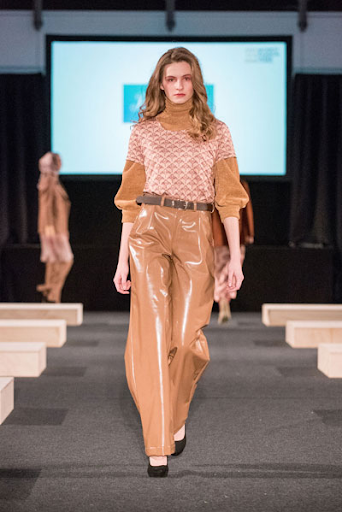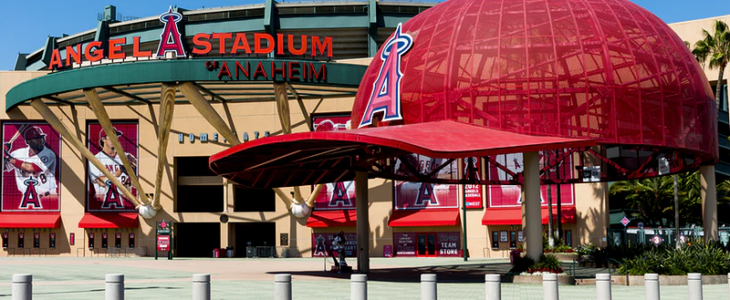Outside the modeling industry, all we see are beautiful people in gorgeous clothes created by famous designers, but on the inside, we never see the true impact the standards and rules of the industry have on models and how everyday things continue to reinforce those standards on a daily basis.
What Is Modeling?
Modeling takes place all over the world and represents all of the cultures and aspects of our time. Fashion models help promote clothing brands and designers by walking a catwalk, showing off to the audience. The catwalk is not the only way to promote brands, models are also featured in magazines, on social media and online websites.
It takes hard work to become a fashion model and with that, it often does require someone to meet the physical requirements asked of them, or there's a chance they would not be given the job.
What is the Dark Side of This Industry?
There's a lot that’s hidden in modeling and plenty of reality that is not being talked about. Fashion and modeling is much more than just dressing up and representing brands. There are unrealistic beauty standards that you are expected to meet regarding your physical appearance, which then causes eating disorders. These eating disorders stem from the feeling of having to meet these unrealistic standards in our society.
Diversity is another issue in this industry. Fashion shows and fashion magazines are full of the same tall-and-skinny women, and never different types of bodies. It's a rare occurrence when we see a diverse group of people in our magazines or fashion shows.
Many people who have left the industry have started to speak up and explain how they have been harassed and forced to do something. Nikki Dubose told Psychology Today, “Models are often forced into doing things that they don’t want to do, such as losing weight for jobs.”
They talk about how toxic it is to be a model and how there are really no benefits to this career. Fashionista.com says, “Now I am having to compete with the girls that have the online presence that I was not so quick to jump onboard with.”
In an interview someone says, “So many women are having to compromise their physical and often mental health for the advancement of their careers.” These unreasonable standards' society has created really takes a toll on one's mental, emotional, and physical health.
The dark side is never shown or talked about unless we have someone speaking up after their toxic experience. People develop depression, anxiety, and eating disorders all from trying to compete against society and against one another. Consumers and critics will never be satisfied with the way models look.
How Can Modeling Affect Your Mental/Physical Health?
The modeling industry has so many effects on both people's mental and physical health. When you think about modeling, it's often linked with a fancy lifestyle: being rich and put together all the time, looking pretty, and famous brands. But once you actually get hired for a job, you realize how this career isn’t as glamorous as it seems.
Psychology Today says, “Studies in the past decade have shown that models run a higher risk of developing psychological disorders and report lower life satisfaction compared to other occupations.” Models are also shown to develop anorexia and/or depression. Society glamorizes the effects of these issues, and it causes low self-confidence and self-esteem.
Models are chosen based on their physical appearance or features. If they do not meet certain standards, they are often told in order to have the job, they need to meet these requirements. Study Moose says, “Many eating disorders have developed due to the modeling industry and can cause detrimental effects to the human body, some even resulting in death.” She says there is so much pressure put on models to meet the standards an agency wants.
Where Do These Beauty Standards Come From?
These beauty standards stem from all over. Manifold says, today they drastically affect everyday interaction, the media, and the commercial world. They determine what is “beautiful”, from body shape, to facial proportions, to height and weight. Each country has different standards and different ways you are told to look. If you do not meet it, you are considered “not beautiful.” Each person has their own unique features they are born with, but as they grow up they become pressured into changing those features and looking a certain way. These standards change all the time, but as of now, the American beauty standards are generally white, blue-eyed, young, and thin.
Our cultural influences and aesthetic is what guides our perception of beauty, and people will do almost anything to achieve the standards, even if it’s not ideal. Boombycindy.com says, “A thin silhouette as the beauty standard is a very recent development—it only started in the 1960s!”
Our first thoughts in this world are: Am I good enough? Or What do I need to change? We are always competing against each other and forcing ourselves to change and fit these standards.
How This is Reinforced by Social Media?
Social media is what people use to erase their insecurities and put on a whole different look in their photos that aren’t typically true to them. Genpolotics says, “Popular social media platforms like Instagram and TikTok have become a competition on who gets the most likes, comments, and followers. They do this by altering their appearance in any way possible, because if you are considered conventionally attractive, you will get more attention on social media.”
Most of the time when you’re scrolling on social media, you’ll see these heavily edited posts and never who someone truly is. While social media can be used positively, it’s turned into a nasty and hurtful beauty competition. Genpolotics also says, “Not only does social media reinforce constraining beauty standards, but it also gives this false perception of what beauty truly is.” Social media takes part in creating these impractical beauty standards, which causes people to have low self-esteem and confidence.
Social media and the modeling industry go hand in hand because of how they are negatively affecting people. To get booked for these certain shows or to even be considered by agencies, you need to also have a certain amount of followers on social media. Medium.com, General Manager of Vivien’s Models, Catherine McGill says, “Most companies today will not even consider a model if they do not have at least 10,000 followers on social media.”
Fans look up to certain celebrities and influencers but instead of looking up to who they truly are, they are shown the fake side. Medium.com says, “Fans trust and emulate their favorite models.” Models feel like there can't be anything negative on social media. They feel they need to only show the upside and fake it. In the Themadameblue they say, Abbey Lee Kershaw, was quick to criticize Vogue’s YouTube videos for contributing to the misleading facade of a glamorous model life. We are seeing and viewing a whole different world on social media than what is actually going on.




